The Heartwarming Old Fashioned Beef Stew Recipe You Need Now
Comfort arrives with this hearty beef stew that whispers tales of grandma’s kitchen and warmth.
Robust flavors merge in a single pot, creating a symphony of tender meat and rich vegetables.
Thick gravy coats each morsel, promising deep satisfaction with every spoonful.
Slow-cooking transforms simple ingredients into a miraculous meal that feels like a culinary hug.
Cold evenings demand this classic dish that connects generations through its timeless appeal.
Gather around the table and savor each carefully simmered bite of pure, rustic deliciousness.
You won’t want to miss this soul-satisfying recipe that turns ordinary ingredients into an extraordinary experience.
Why Old Fashioned Beef Stew Shines
Beef Stew Important Ingredients
Meat:Vegetables:Liquid and Seasoning:Thickener:Optional Garnish:Instructions for Classic Beef Stew
Step 1: Sear the Beef
Heat olive oil in a large pot over medium-high heat. Add beef chunks and brown them on all sides until a golden crust forms.
This step locks in the rich, meaty flavors. Transfer the browned beef to a separate plate.
Step 2: Develop Aromatic Base
Toss chopped onions and minced garlic into the same pot. Sauté until the onions become translucent and soft, releasing their sweet, fragrant notes.
Step 3: Create Thickening Roux
Sprinkle flour over the onion and garlic mixture. Stir and cook for 1-2 minutes to eliminate the raw flour taste and create a golden base for the stew.
Step 4: Build the Liquid Foundation
Gradually pour in beef broth while continuously stirring. This technique prevents any lumps from forming and ensures a smooth, velvety sauce.
Step 5: Combine Stew Ingredients
Return the seared beef to the pot. Add:Step 6: Slow Simmer to Perfection
Bring the stew to a boil, then reduce heat to low.
Cover and let simmer for 2-3 hours. The long, slow cooking process helps tenderize the beef and meld all the flavors together.
Step 7: Final Touch and Serve
Remove the bay leaf. Optional: Sprinkle fresh chopped parsley on top for a burst of color and freshness.
Serve hot in deep bowls with crusty bread.
Expert Advice for Beef Stew
New Takes on Traditional Beef Stew
Ideal Sides for Beef Stew
FAQs
Browning the beef creates a rich, caramelized exterior that adds deep flavor and helps seal in the meat’s juices, giving the stew a more complex and delicious taste.
While beef is traditional, you can substitute chuck roast, stew meat, or even lamb for a similar hearty result. Just ensure the meat is well-marbled and cut into similar-sized chunks.
You can substitute with soy sauce or a mix of soy sauce and vinegar. These alternatives will still provide a similar umami and tangy flavor profile to your stew.
Print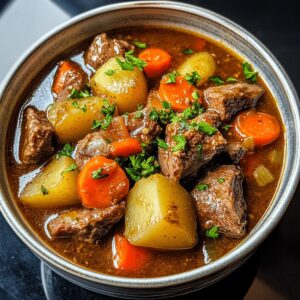
Hearty Old Fashioned Beef Stew Recipe
- Total Time: 2 hours 20 minutes
- Yield: 6 1x
Description
Hearty old fashioned beef stew from Midwestern kitchens delivers comfort in each spoonful. Rich beef chunks, root vegetables, and aromatic herbs simmer together, creating a classic meal you’ll savor with pure satisfaction.
Ingredients
Main Ingredients:
- 2 pounds (907 grams) beef stew meat, cut into chunks
- 4 large potatoes, diced
- 4 large carrots, sliced
- 1 large onion, chopped
Liquid and Flavor Enhancers:
- 4 cups (946 milliliters) beef broth
- 2 tablespoons tomato paste
- 2 tablespoons Worcestershire sauce
Seasonings and Extras:
- 3 garlic cloves, minced
- 1 bay leaf
- 2 tablespoons olive oil
- 2 tablespoons flour
- Salt and pepper to taste
- Fresh parsley for garnish (optional)
Instructions
- Warm olive oil in a heavy-bottomed pot over medium-high heat and thoroughly sear beef cubes until golden brown on all exterior surfaces, creating a rich caramelized crust.
- Transfer browned meat to a temporary plate, leaving behind flavorful drippings in the pot.
- Sauté diced onions and minced garlic in the same pot until translucent and fragrant, approximately 3-4 minutes.
- Dust flour over the aromatic vegetables, stirring continuously to coat and prevent burning, which helps thicken the stew’s base.
- Gradually pour beef broth into the pot, whisking methodically to eliminate potential flour clumps and create a smooth liquid foundation.
- Reintroduce seared beef to the pot, then incorporate carrots, potatoes, tomato paste, Worcestershire sauce, bay leaf, salt, and pepper.
- Elevate temperature to achieve a vigorous boil, then immediately reduce heat to low, covering the pot and allowing the stew to simmer gently for 2-2.5 hours.
- Periodically check liquid levels and beef tenderness, adjusting heat if necessary to maintain a consistent, gentle bubbling.
- Once meat becomes fork-tender and vegetables are soft, remove bay leaf and allow stew to rest for 10 minutes before serving.
- Optional: Garnish with freshly chopped parsley for added brightness and visual appeal.
Notes
- Perfectly brown the beef at high heat to develop a rich, caramelized exterior that locks in deep flavor and creates a beautiful golden crust.
- Choose tough, well-marbled cuts like chuck roast or bottom round for maximum tenderness and rich beef flavor during the long, slow cooking process.
- Resist stirring too frequently while simmering to allow the stew to develop complex, layered flavors and prevent breaking down the meat’s texture.
- Customize the stew by adding root vegetables like parsnips or turnips for extra depth, or make it gluten-free by substituting cornstarch for flour when thickening.
- Prep Time: 20 minutes
- Cook Time: 2 hours
- Category: Lunch, Dinner
- Method: Simmering
- Cuisine: American
Nutrition
- Serving Size: 6
- Calories: 354 kcal
- Sugar: 4 g
- Sodium: 420 mg
- Fat: 18 g
- Saturated Fat: 6 g
- Unsaturated Fat: 10 g
- Trans Fat: 0.2 g
- Carbohydrates: 16 g
- Fiber: 3 g
- Protein: 32 g
- Cholesterol: 95 mg

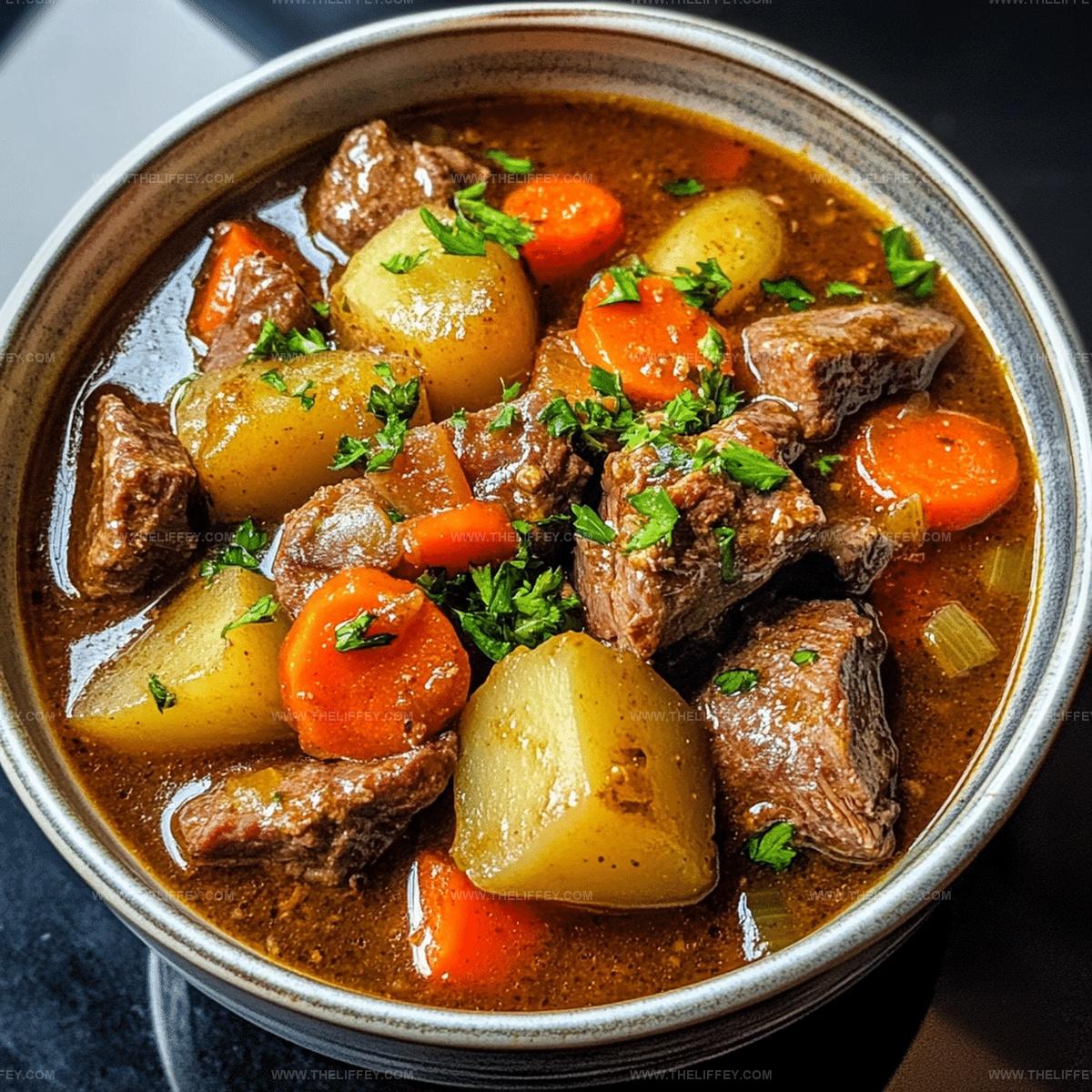
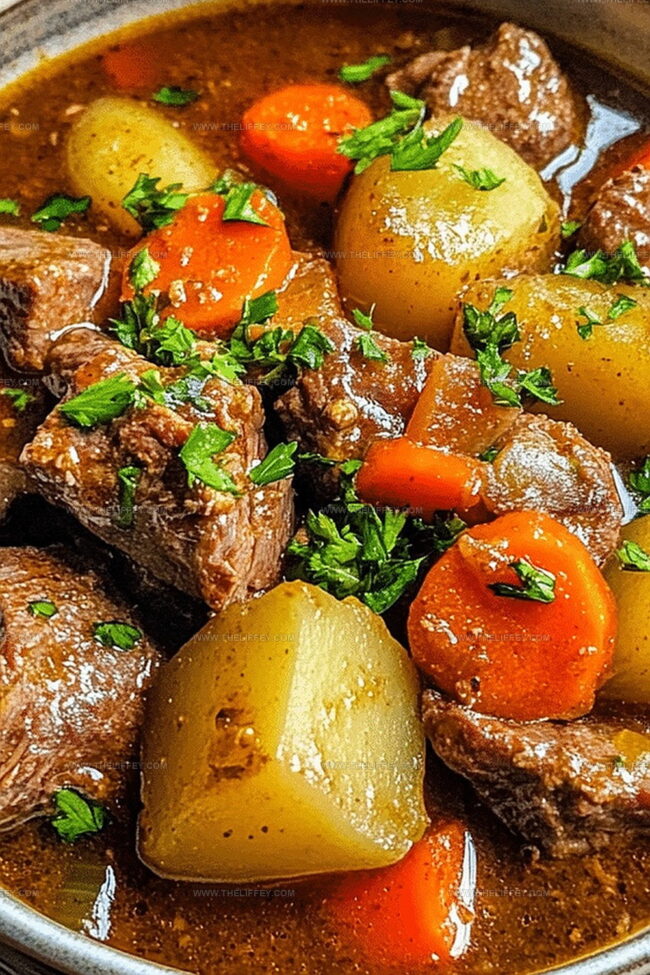
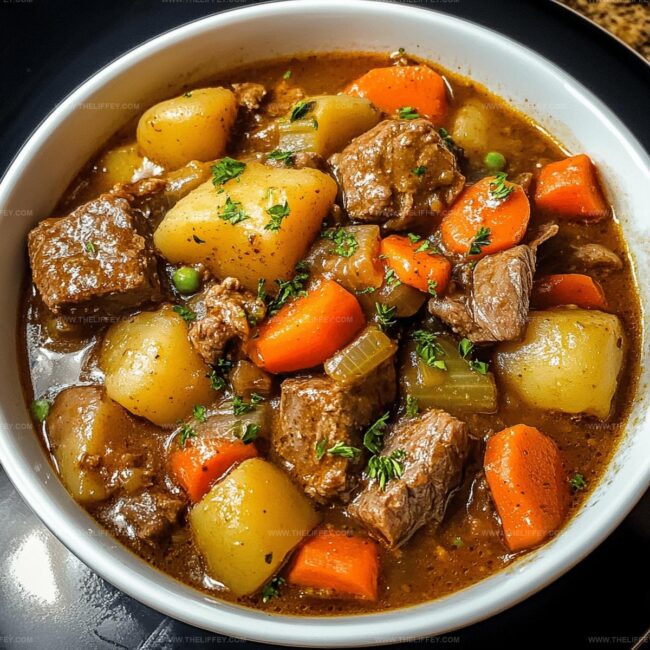
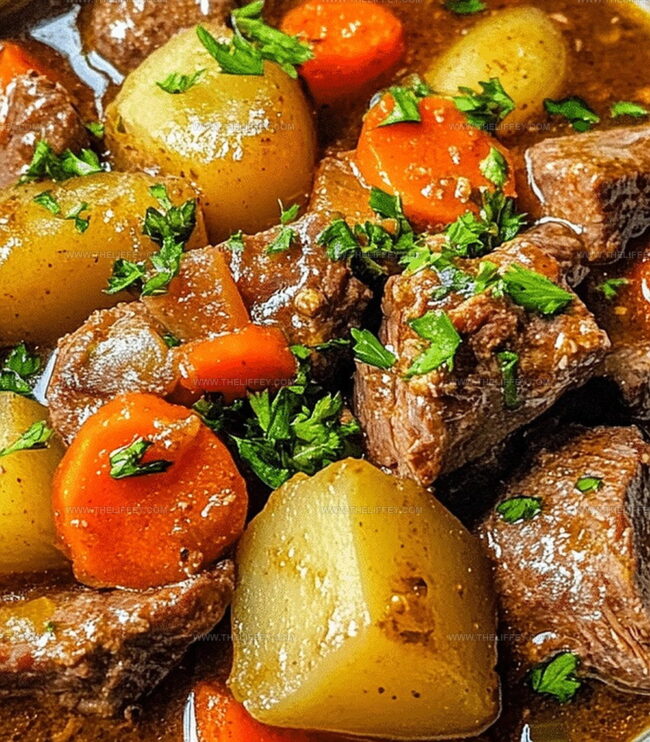
Amanda Bennett
Recipe Curator & Culinary Educator
Expertise
Baking and Pastry Arts, Recipe Testing and Development, Culinary Instruction, Food Styling and Photography
Education
Asheville-Buncombe Technical Community College, Asheville, NC
Diploma in Culinary Arts
Emphasized practical cooking skills, nutrition, and kitchen management.
Cambridge School of Culinary Arts, Cambridge, MA
Certificate in Professional Pastry Arts
Specialized in baking techniques, dessert presentation, and flavor profiling
Amanda’s roots run deep in the Southern hills, where every meal started fresh from the garden and every dessert came with a story. She trained at Asheville-Buncombe Technical Community College and sharpened her pastry skills at the Cambridge School of Culinary Arts, blending classic technique with everyday charm.
At The Liffey, Amanda’s passion is making baking and home cooking feel natural and joyful. She’s all about single recipes that are simple enough for a busy afternoon, but special enough to make someone’s day a little sweeter.